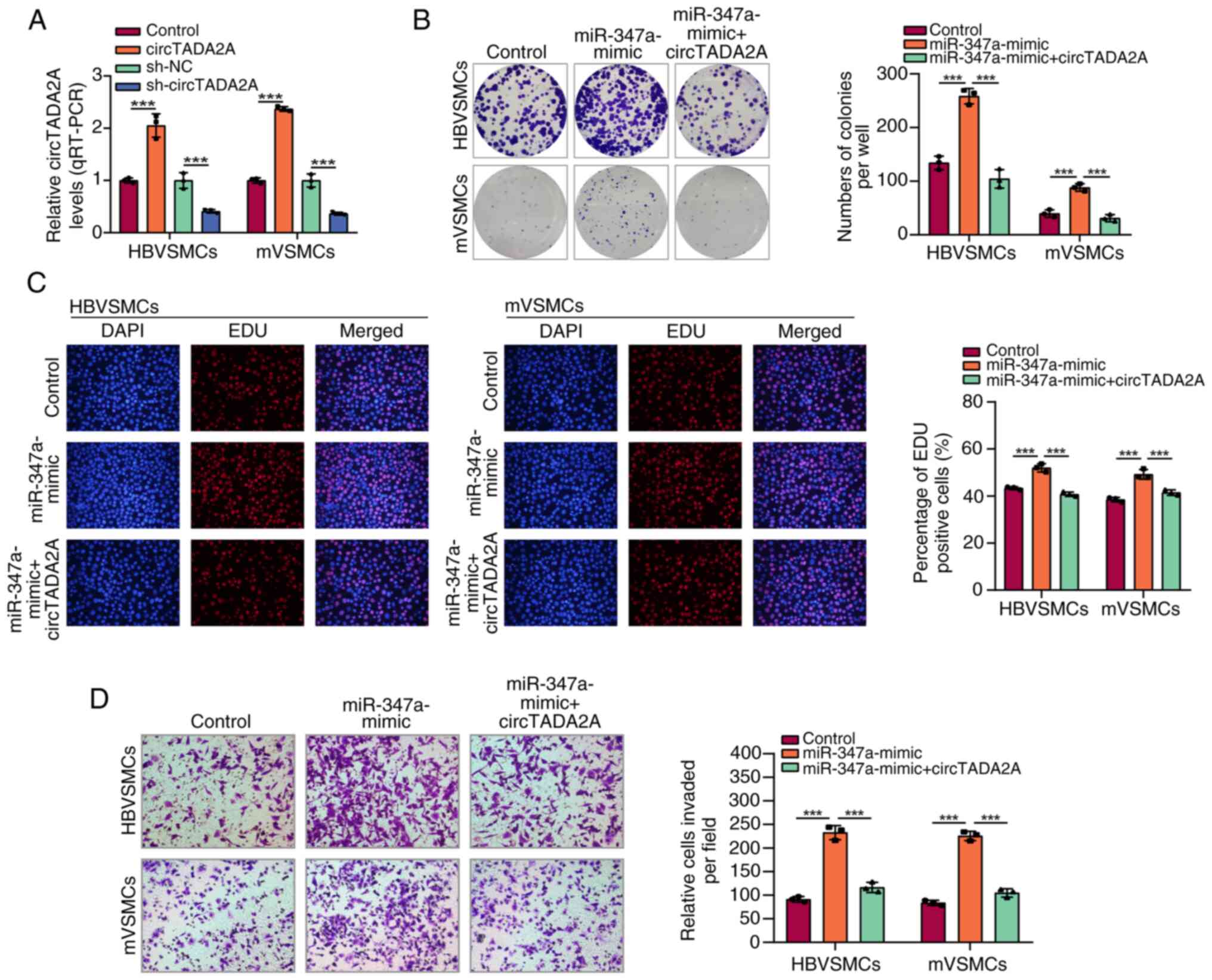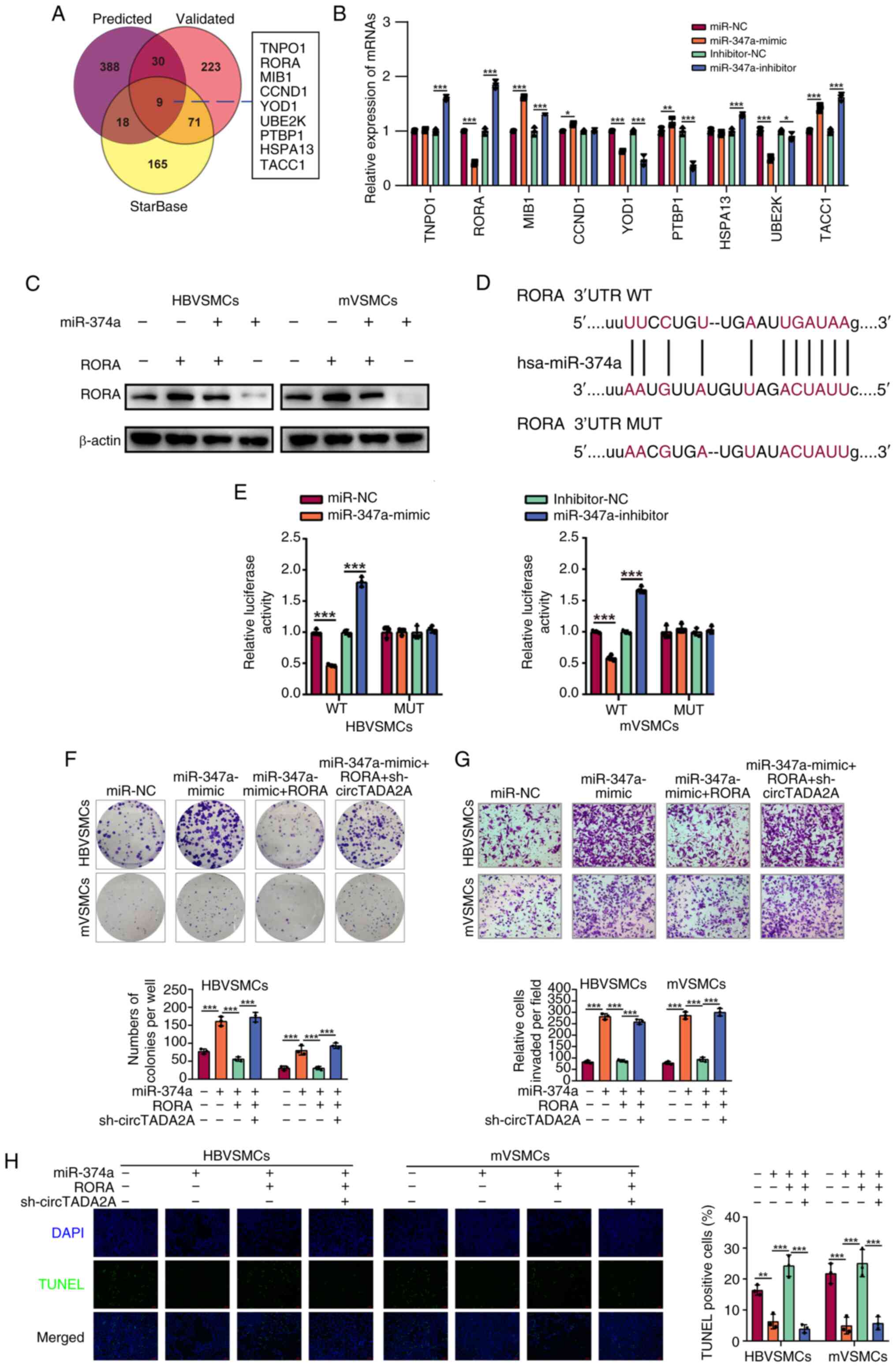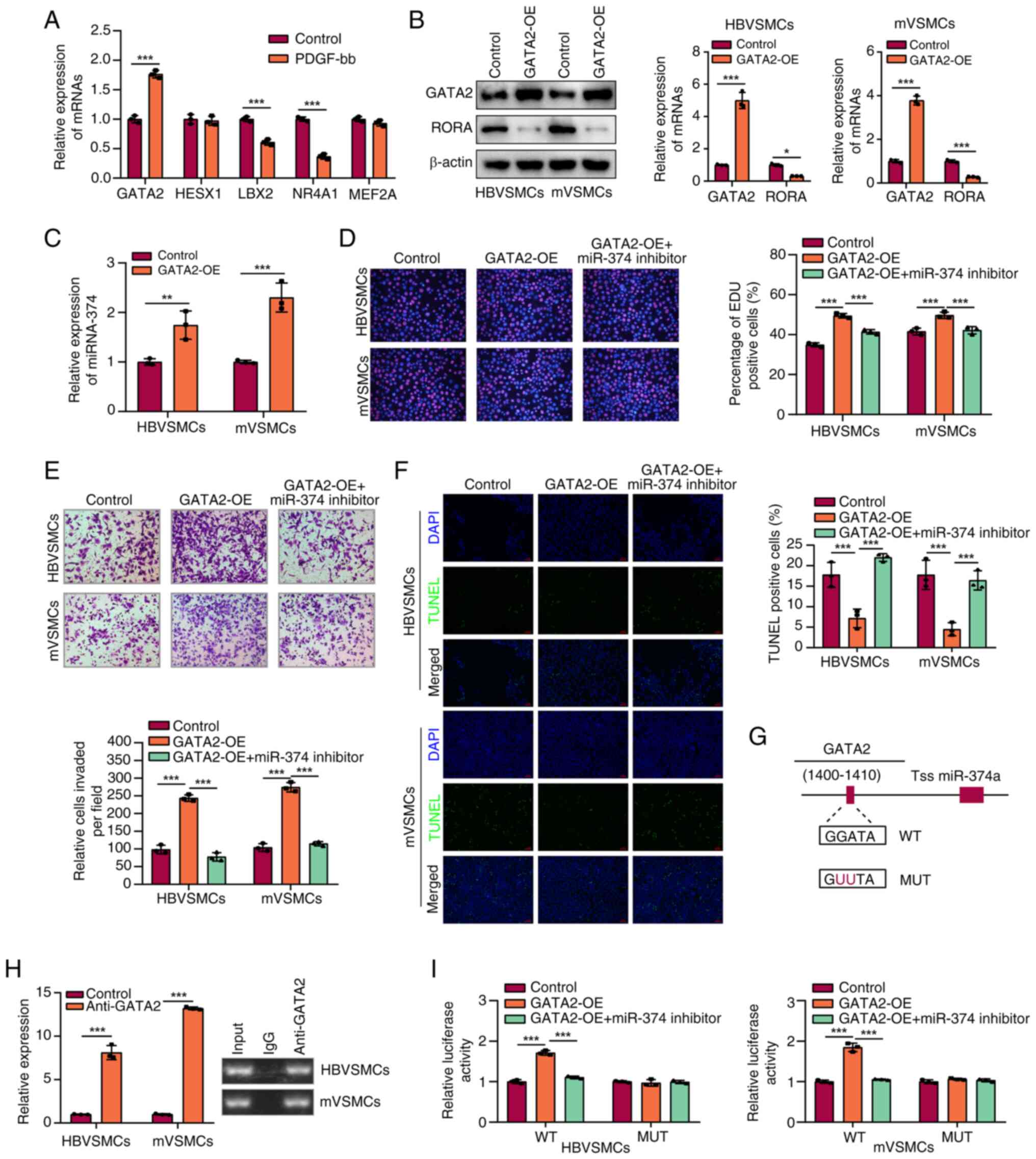GATA2‑miR‑374a axis promotes vascular smooth muscle cells proliferation, migration via targeting circTADA2A/RORA axis
- Authors:
- Published online on: July 8, 2024 https://doi.org/10.3892/etm.2024.12646
- Article Number: 357
-
Copyright: © Tu et al. This is an open access article distributed under the terms of Creative Commons Attribution License.
Metrics:
Total
Views: 0 (Spandidos Publications: | PMC Statistics:
)
Total PDF Downloads: 0 (Spandidos Publications: | PMC Statistics:
)
Abstract
Evidence has shown that microRNAs (miRNAs/
miRs) play key roles in biological functions of vascular smooth muscle cells (VSMCs). However, the role of miR‑374a in VSMCs remains to be elucidated. The present study aimed to explore the influence of miR‑374a on VSMCs and its molecular mechanism. The expression level of miR‑374a was measured by reverse transcription‑quantitative (RT‑q) PCR. MTT and Transwell assay were employed to assess the role of miR‑374a in proliferation and migration of VSMCs. To order to determine miR‑374a targets, a dual‑luciferase reporter assay was conducted, which was further verified by rescue experiments. Chromatin Immunoprecipitation Assay and JASPAR databases were applied to explore the regulatory association between GATA binding protein 2 (GATA2) and miR‑374a. Western blotting or RT‑qPCR were employed to detect the protein expression levels of GATA2 or RAR‑related orphan receptor A (RORA). The present study found that miR‑374a was elevated in VSMCs following treatment with platelet‑derived growth factor‑BB (PDGF‑BB) compared with that in control group. In addition, the results demonstrated that a higher expression of a miR‑374a could promote proliferation and migration of VSMCs while miR‑374a inhibitor suppressed the PDGF‑BB‑induced proliferation and migration of VSMCs in vitro. Furthermore, circTADA2A bound to miR‑374a and then upregulated RORA expression, which resulted in inhibition in VSMCs proliferation and migration. On the other hand, the result indicated that GATA2 overexpression could augment the proliferation, migration of PDGF‑bb‑induced VSMCs, which could be rescued by miR‑374a inhibitor. The findings suggested that the GATA2/circTADA2A‑miR‑374a axis promoted the proliferation and migration of VSMCs by targeting RORA, which were closely related to atherosclerosis (AS). Thus the results might offer a new therapeutic target for AS.
miRs) play key roles in biological functions of vascular smooth muscle cells (VSMCs). However, the role of miR‑374a in VSMCs remains to be elucidated. The present study aimed to explore the influence of miR‑374a on VSMCs and its molecular mechanism. The expression level of miR‑374a was measured by reverse transcription‑quantitative (RT‑q) PCR. MTT and Transwell assay were employed to assess the role of miR‑374a in proliferation and migration of VSMCs. To order to determine miR‑374a targets, a dual‑luciferase reporter assay was conducted, which was further verified by rescue experiments. Chromatin Immunoprecipitation Assay and JASPAR databases were applied to explore the regulatory association between GATA binding protein 2 (GATA2) and miR‑374a. Western blotting or RT‑qPCR were employed to detect the protein expression levels of GATA2 or RAR‑related orphan receptor A (RORA). The present study found that miR‑374a was elevated in VSMCs following treatment with platelet‑derived growth factor‑BB (PDGF‑BB) compared with that in control group. In addition, the results demonstrated that a higher expression of a miR‑374a could promote proliferation and migration of VSMCs while miR‑374a inhibitor suppressed the PDGF‑BB‑induced proliferation and migration of VSMCs in vitro. Furthermore, circTADA2A bound to miR‑374a and then upregulated RORA expression, which resulted in inhibition in VSMCs proliferation and migration. On the other hand, the result indicated that GATA2 overexpression could augment the proliferation, migration of PDGF‑bb‑induced VSMCs, which could be rescued by miR‑374a inhibitor. The findings suggested that the GATA2/circTADA2A‑miR‑374a axis promoted the proliferation and migration of VSMCs by targeting RORA, which were closely related to atherosclerosis (AS). Thus the results might offer a new therapeutic target for AS.















